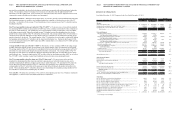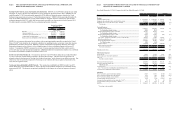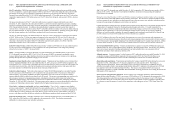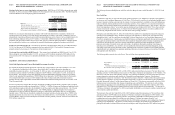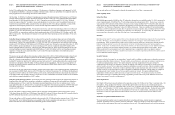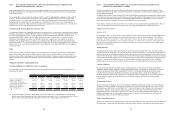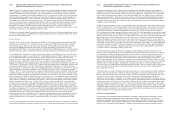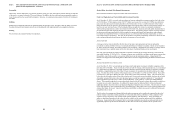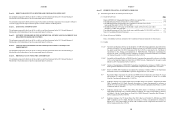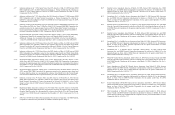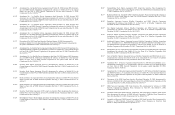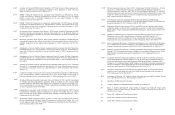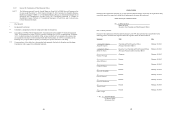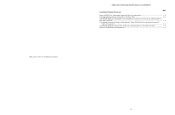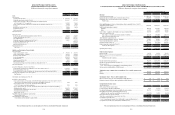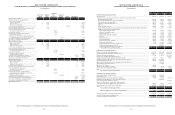Dish Network 2012 Annual Report Download - page 48
Download and view the complete annual report
Please find page 48 of the 2012 Dish Network annual report below. You can navigate through the pages in the report by either clicking on the pages listed below, or by using the keyword search tool below to find specific information within the annual report.Item 7. MANAGEMENT’S DISCUSSION AND ANALYSIS OF FINANCIAL CONDITION AND
RESULTS OF OPERATIONS - Continued
84
84
Seasonality
Historically, the first half of the year generally produces fewer gross new subscriber activations than the second half
of the year, as is typical in the pay-TV service industry. In addition, the first and fourth quarter generally produce a
lower churn rate than the second and third quarter. However, we cannot provide assurance that this will continue in
the future.
Inflation
Inflation has not materially affected our operations during the past three years. We believe that our ability to increase
the prices charged for our products and services in future periods will depend primarily on competitive pressures.
Backlog
We do not have any material backlog of our products.
Item 7A. QUANTITATIVE AND QUALITATIVE DISCLOSURES ABOUT MARKET RISK
85
85
Market Risks Associated With Financial Instruments
Our investments and debt are exposed to market risks, discussed below.
Cash, Cash Equivalents and Current Marketable Investment Securities
As of December 31, 2012, our cash, cash equivalents and current marketable investment securities had a fair value
of $7.238 billion. Of that amount, a total of $5.977 billion was invested in: (a) cash; (b) VRDNs convertible into
cash at par value plus accrued interest generally in five business days or less; (c) debt instruments of the United
States Government and its agencies; (d) commercial paper and corporate notes with an overall average maturity of
less than one year and rated in one of the four highest rating categories by at least two nationally recognized
statistical rating organizations; and/or (e) instruments with similar risk, duration and credit quality characteristics to
the commercial paper and corporate obligations described above. The primary purpose of these investing activities
has been to preserve principal until the cash is required to, among other things, fund operations, make strategic
investments and expand the business. Consequently, the size of this portfolio fluctuates significantly as cash is
received and used in our business. The value of this portfolio is negatively impacted by credit losses; however, this
risk is mitigated through diversification that limits our exposure to any one issuer.
Interest Rate Risk
A change in interest rates would affect the fair value of our cash, cash equivalents and current marketable
investment securities portfolio, however, we normally hold these investments to maturity. Based on our December
31, 2012 current non-strategic investment portfolio of $5.977 billion, a hypothetical 10% change in average interest
rates would not have a material impact on the fair value due to the limited duration of our investments.
Our cash, cash equivalents and current marketable investment securities had an average annual rate of return for the
year ended December 31, 2012 of 0.6%. A change in interest rates would affect our future annual interest income from
this portfolio, since funds would be re-invested at different rates as the instruments mature. A hypothetical 10%
decrease in average interest rates during 2012 would result in a decrease of approximately $2 million in annual interest
income.
Strategic Marketable Investment Securities
As of December 31, 2012, we held strategic and financial debt and equity investments of public companies with a
fair value of $1.261 billion. These investments, which are held for strategic and financial purposes, are concentrated
in a small number of companies, are highly speculative and have experienced and continue to experience volatility.
In addition, a significant portion of the value of these investments is concentrated in the debt securities of a single
issuer. The fair value of the securities of that single issuer as of December 31, 2012 was $951 million. These debt
securities have a call option, held by the issuer, upon 30 days notice after December 1, 2012. The call option price
is less than the fair market value of these debt securities and, if exercised, proceeds would be less than our recorded
fair market value and therefore, reduce our unrealized gains recorded as a separate component of “Accumulated
other comprehensive income (loss)” within “Total stockholders’ equity (deficit),” on our Consolidated Balance
Sheets. This potential reduction in our unrealized gain related to the call option on these debt securities would have
no impact on our results of operations. In addition, this single issuer has indicated that it will need substantial
additional capital to meet its business and financial obligations beyond the next 12 months. The fair value of certain
of the debt securities in our investment portfolio, including those of that single issuer, can be adversely impacted by,
among other things, the issuers’ respective performance and ability to obtain any necessary additional financing on
acceptable terms, or at all.
The fair value of our strategic and financial debt and equity investments can be significantly impacted by the risk of
adverse changes in securities markets generally, as well as risks related to the performance of the companies whose
securities we have invested in, risks associated with specific industries, and other factors. These investments are
subject to significant fluctuations in fair value due to the volatility of the securities markets and of the underlying
businesses. In general, the debt instruments held in our strategic marketable investment securities portfolio are not
significantly impacted by interest rate fluctuations as their value is more closely related to factors specific to the


